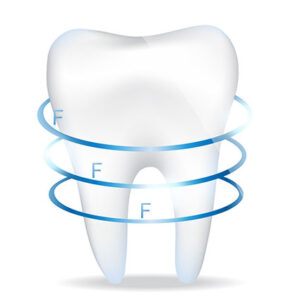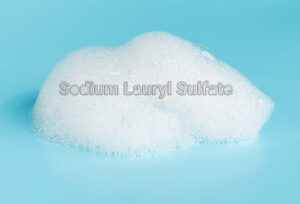Toothpaste is a significant part of keeping our teeth clean every day, but with so many types to choose from, it can be difficult to know which ingredients are really helping our teeth and which ones might not be so great. Some ingredients are proven to help our teeth stay healthy, while others are a bit controversial or do not offer much. In this guide, we will explain some of the best and worst ingredients in toothpaste, especially fluoride and xylitol, and share their pros and cons. We will also answer some common questions and give you some important tips about ingredient safety.
Best Toothpaste Ingredients Trusted by Dentists
Fluoride
Fluoride is probably the most important ingredient in toothpaste, and for good reason. It’s a natural mineral that helps protect our teeth from cavities, makes enamel stronger, and the mouth healthier overall. Fluoride works in two ways: first, it helps rebuild weakened enamel, which is the outer layer of our teeth, through a process called remineralization. Second, it helps stop the harmful bacteria in our mouths from growing, which reduces plaque buildup and the risk of cavities.
Positives: Fluoride has been studied a lot and is proven to prevent cavities in both kids and adults. According to the American Dental Association (ADA), using fluoride toothpaste regularly can lower the chance of getting cavities by up to 25%. Fluoride not only helps protect our teeth from decay, but it also makes enamel stronger, which helps protect teeth from everyday wear. It can even reduce tooth sensitivity by helping to protect the outer layer of enamel. For people at higher risk of cavities—like those with dry mouth or who eat sugary foods often—fluoride toothpaste offers extra protection.
Negatives: Even though fluoride is highly effective, it’s important to avoid overuse, especially with kids. If children swallow excess fluoride toothpaste, it can lead to a condition called dental fluorosis, which may cause white spots or streaks on their teeth. In more serious cases, it can cause brown stains or even pits in the enamel. That’s why, as dentists, we always recommend supervising young kids while they brush and using only a small, pea-sized amount of toothpaste to minimize the risk of swallowing excess fluoride.
There are also concerns about fluoride if it’s ingested from various sources, such as toothpaste, drinking water, and professional fluoride treatments. However, the amount of fluoride in toothpaste is generally considered safe. The ADA recommends a pea-sized amount for children ages 2-6 to help ensure they don’t swallow too much.
Some people worry that long-term fluoride exposure could lead to issues like skeletal fluorosis (a bone condition caused by an excessive amount of fluoride) or thyroid problems. However, most studies show that the fluoride levels in toothpaste are very low and safe for daily use.
Xylitol
Xylitol is a natural sugar alcohol that’s become popular in toothpaste. Unlike regular sugar, xylitol doesn’t feed the harmful bacteria in our mouths that cause cavities. In fact, it can actually help reduce the number of these harmful bacteria, especially the ones that cause tooth decay. 
Positives: One of the biggest benefits of xylitol in toothpaste is that it can help lower the chance of getting cavities. Studies show that xylitol can stop cavity-causing bacteria from growing, which helps keep our teeth healthier. It also encourages our mouth to make more saliva. Saliva is important because it helps keep our mouth’s pH balanced and protects our enamel from acid that can cause tooth decay. Saliva also helps wash away food particles and neutralize the acids that can harm our teeth. For people with dry mouth (which can occur due to medications or aging), xylitol is especially helpful because it helps keep the mouth moist and refreshed.
Negatives: Even though xylitol is safe for most people, it can cause stomach problems if a person swallows too much of it, especially for people with sensitive stomachs. Since it’s a sugar alcohol, it can lead to bloating, gas, or diarrhea if consumed in large amounts. Also, while xylitol toothpaste helps fight cavities, it doesn’t protect our enamel as well as fluoride does. While xylitol toothpaste is a great addition to our routine, it’s not advisable to completely replace fluoride toothpaste with one that contains only xylitol as the active ingredient.
Worst Toothpaste Ingredients Dentists Warn Against
Triclosan
Triclosan is a chemical that was once put in toothpaste to help fight plaque and gum disease. It worked by killing some of the bad bacteria in our mouths. But over time, people started to realize that triclosan might not be as safe as we thought. Research shows that it can mess with our hormones and might even help bacteria become resistant to antibiotics, which makes it more difficult to treat infections. 
In 2017, the U.S. government decided to ban triclosan in toothpaste because there wasn’t enough proof that it was both safe and effective. Today, most toothpaste brands don’t use triclosan anymore, and that’s a good thing. We now have safer, better options that don’t come with these risks.
Sodium Lauryl Sulfate (SLS)
 Sodium lauryl sulfate (SLS) is the ingredient that makes our toothpaste foam and bubble. While it makes our toothpaste feel like it’s cleaning really well, it can actually cause problems, especially for people with sensitive mouths. If we get sores in our mouths or have gums that are easily irritated, SLS can make these problems worse. It can dry out our mouths and cause discomfort.
Sodium lauryl sulfate (SLS) is the ingredient that makes our toothpaste foam and bubble. While it makes our toothpaste feel like it’s cleaning really well, it can actually cause problems, especially for people with sensitive mouths. If we get sores in our mouths or have gums that are easily irritated, SLS can make these problems worse. It can dry out our mouths and cause discomfort.
SLS isn’t dangerous for most people, but if we have a sensitive mouth, it’s better to choose toothpaste that doesn’t have this ingredient. There are plenty of toothpastes that clean just as well without the extra irritation.
Artificial Sweeteners and Colorants
Many toothpastes add artificial sweeteners, like saccharin or aspartame, to make the toothpaste taste better. But these sweeteners don’t help our teeth at all. They just make the toothpaste taste sweeter, especially for kids. Some studies have also shown that long-term use of these sweeteners might cause health problems like weight gain, diabetes, or other issues.
Also, toothpaste often has artificial colorants to make it look more fun. But these colors can cause allergic reactions in some people or might even make kids act hyperactive. Toothpaste doesn’t need all these extra chemicals. What’s important is that it helps with cleaning teeth—not that it looks or tastes sweet.
Notes:
- Natural vs. Regular Toothpaste: Natural toothpastes sound good because they don’t have chemicals, but they might not protect our teeth as well as regular toothpaste with fluoride. Fluoride is important for fighting cavities, so if you want a natural toothpaste, please check with your dentist at A Great Smile Dental in Las Vegas to make sure it’s still good for your teeth.
- Toothpaste for Sensitive Teeth: If your teeth hurt when you eat cold or hot food, you should look for toothpaste with potassium nitrate or strontium chloride. These ingredients help block the pain, so you can eat and drink without discomfort.
FAQ
Q: Is fluoride toothpaste safe for children?
A: Yes, fluoride toothpaste is safe for children when used in the right amount. For kids under 6, only use a small, pea-sized amount and watch them while they brush to make sure they don’t swallow it.
Q: Can xylitol toothpaste replace fluoride toothpaste?
A: Xylitol is beneficial for teeth, but it doesn’t replace fluoride. Fluoride is more effective at protecting against cavities, while xylitol serves as an additional aid. Therefore, we recommend not replacing fluoride toothpaste, but rather adding xylitol to your daily brushing routine.
Q: What should I do if I have a reaction to a toothpaste ingredient?
A: If your mouth hurts or you get a rash after using toothpaste then you should stop using it right away. You should tell your dentist what happened and try a different toothpaste without the ingredient that caused the problem

